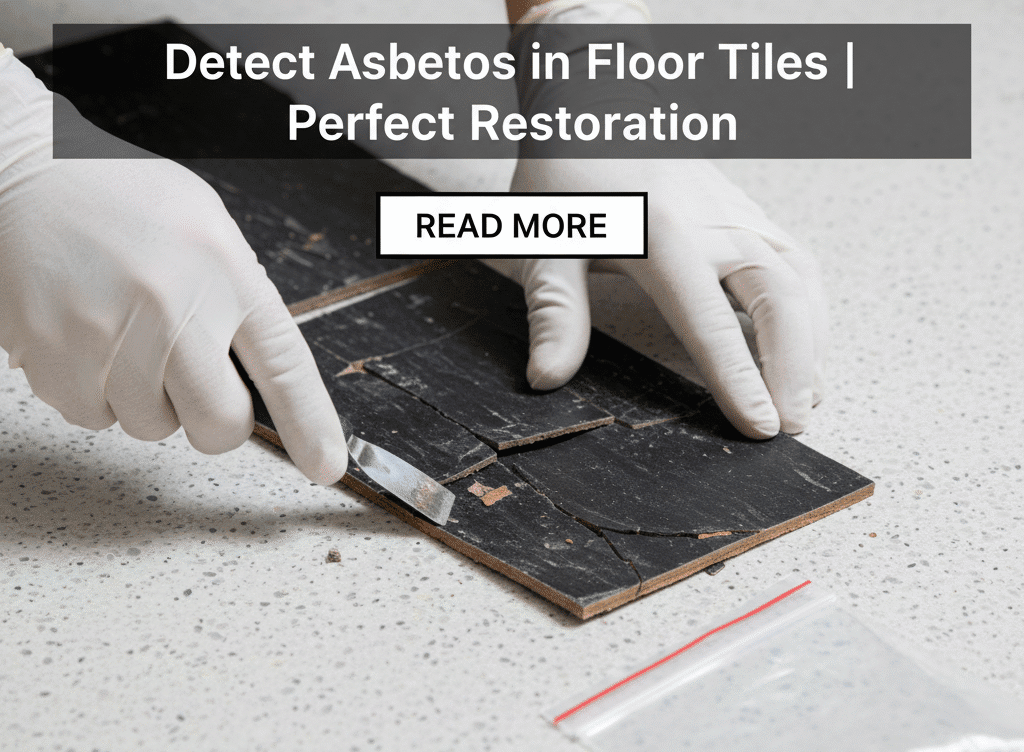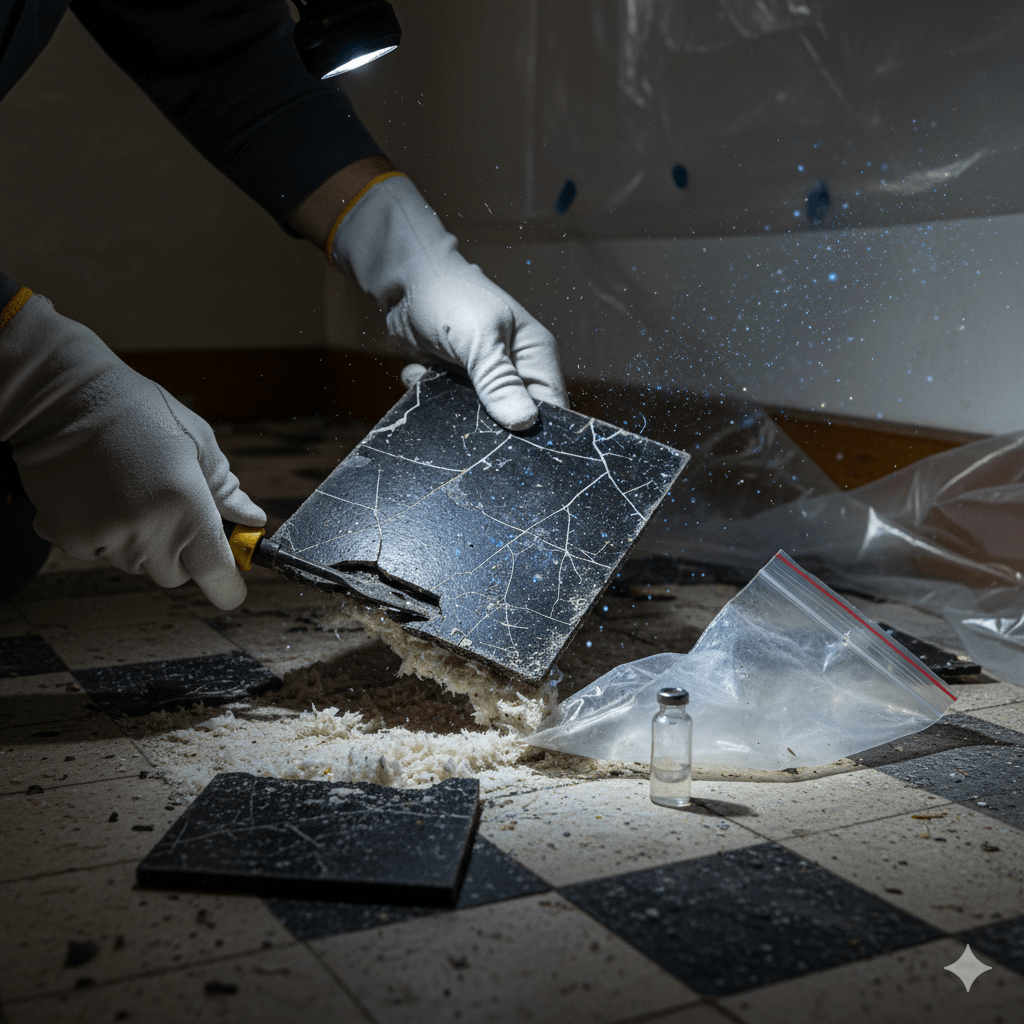
Detect Asbestos in Floor Tiles | Perfect Restoration
How Can You Tell If a Floor Tile Has Asbestos?
Asbestos is a mineral that occurs naturally and was extensively used in construction materials due to its strength and heat-resistant qualities. It is very possible that older houses, especially those constructed before the 1980s, have asbestos in the form of floor tiles, glues, or even backing materials. The very first step in the process of making sure your family is safe and of avoiding costly remediation down the road is identifying whether or not your floor tile contains asbestos. Learning how to identify materials that might contain asbestos can protect you from coming down with serious health issues like lung ailment and cancer that are the result of long exposure to asbestos fibers. At Perfect Restoration, we always encourage safety and the proper identification of the materials if they could contain asbestos.
Signs Your Floor Tile May Contain Asbestos
The very first thing to do in figuring out whether your floor tiles might contain asbestos is to check for visual and historical clues. Asbestos tiles were mostly produced in 9×9 inch or 12×12 inch sizes and had a characteristic dense and chalk-like backing. Moreover, many of these tiles were laid down in buildings before the 1980s, which is a strong indication of the possible presence of asbestos. Other indications are odd patterns of wear, brittle or cracked spots, or tiles that are heavier than they should be according to their size. Also, some companies were notorious for putting asbestos into their products, so it might be helpful to look up your tile’s maker and the period of installation to get some useful hints.
How to Test Floor Tiles for Asbestos Safely
If you suspect your floor tile has asbestos, get it tested first. Testing is crucial before any renovation or removal. Avoid DIY methods that might disturb the tile, as asbestos fibers in the air are extremely dangerous. Only a trained professional should collect the sample for certified lab analysis. Perfect Restoration ensures the testing process is safe and does not expose your household to asbestos. Our team uses proper protective equipment, and the work is done in a contained area following strict safety procedures. Professional testing is the first and most important step to control asbestos exposure.
Risks of Disturbing Asbestos-Containing Floor Tiles
When flooring tiles that contain asbestos are disturbed, apart from the fact that those tiles might fall off and become a mess, the surrounding air gets contaminated with extremely small particles, and the inhalation of such particles can lead to serious health issues. Those particles lodge themselves in the lungs, leading to conditions such as asbestosis, lung cancer, and the like. One would be surprised at how even simple activities like sanding and cutting could release large amounts of fibers. No doubt, with the wrong tools, cleaning and scrapping of old tiles could be risky. If you suspect it has asbestos, the first people to reach out to are the “Perfect Restoration” professionals.
Steps to Take If You Discover Asbestos in Your Floor Tiles
In case you confirm the existence of asbestos, do not panic but act immediately. The first thing to do is to limit the area where the exposure is likely to be from. Hence nobody shall be allowed in suddenly and the exposure cut-off. Don’t be a hero, do not even try to frac the tiles. Instead, get in touch with certified professionals who are trained in handling asbestos. Your particular case will determine if the asbestos is going to be completely removed or just encased. Perfect Restoration provides a full range of services from evaluation and containment to safe removal. (Osha gov)

FAQs About Asbestos Floor Tiles
Q1: Can I tell if a floor tile has asbestos just by looking at it?
It is difficult to determine whether asbestos is present from appearance alone. Laboratory testing is the only reliable way to find out. Older tiles (those installed before the 1980s) may prove suspicious in this regard.
Q2: Are all old floor tiles dangerous?
Not all old floor tiles will contain asbestos. Those tiles which are in a good condition and remain undisturbed relatively present little risk. Any work or wear on these tiles could cause potential exposure.
Q3: How expensive is asbestos testing?
The costs of asbestos testing can vary, based on the number of samples taken and lab fees. But many homeowners see testing as a small price in contrast to the safety that comes with it.
Q4: Can I remove asbestos floor tiles myself?
DIY removal is very strongly unadvised and poses health risks. Always use certified professionals like Perfect Restoration to carry on safe removal or encapsulation.
Q5: How can I prevent asbestos exposure at home?
Avoid disturbing tiles given an asbestos potential, ensure the maintenance of appropriate ventilation. Whenever engaging in any renovation work, consult professionals. Professional removal or encapsulation is the best possibility.
Conclusion
Determining whether a floor tile contains asbestos is a crucial step in keeping your house safe from harmful substances. It is possible that older tiles still bear asbestos, but only through adequate testing can its presence be affirmed. If you accidentally disturb these substances, the risk of inhalation or other routes of contamination increases. Perfect Restoration offers professional assistance in the form of testing, managing, and removing asbestos tiles safely. Acting quickly and wisely keeps your house secure, healthy, and free from the dangers of asbestos.

